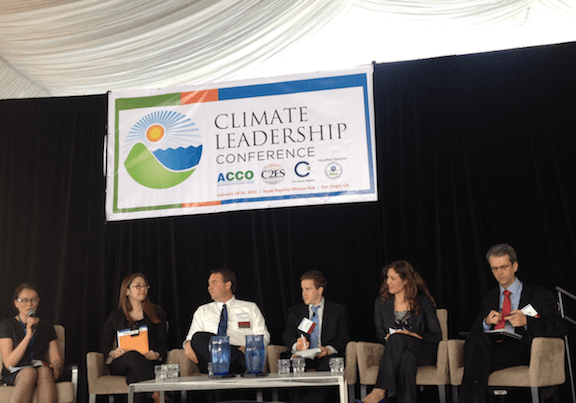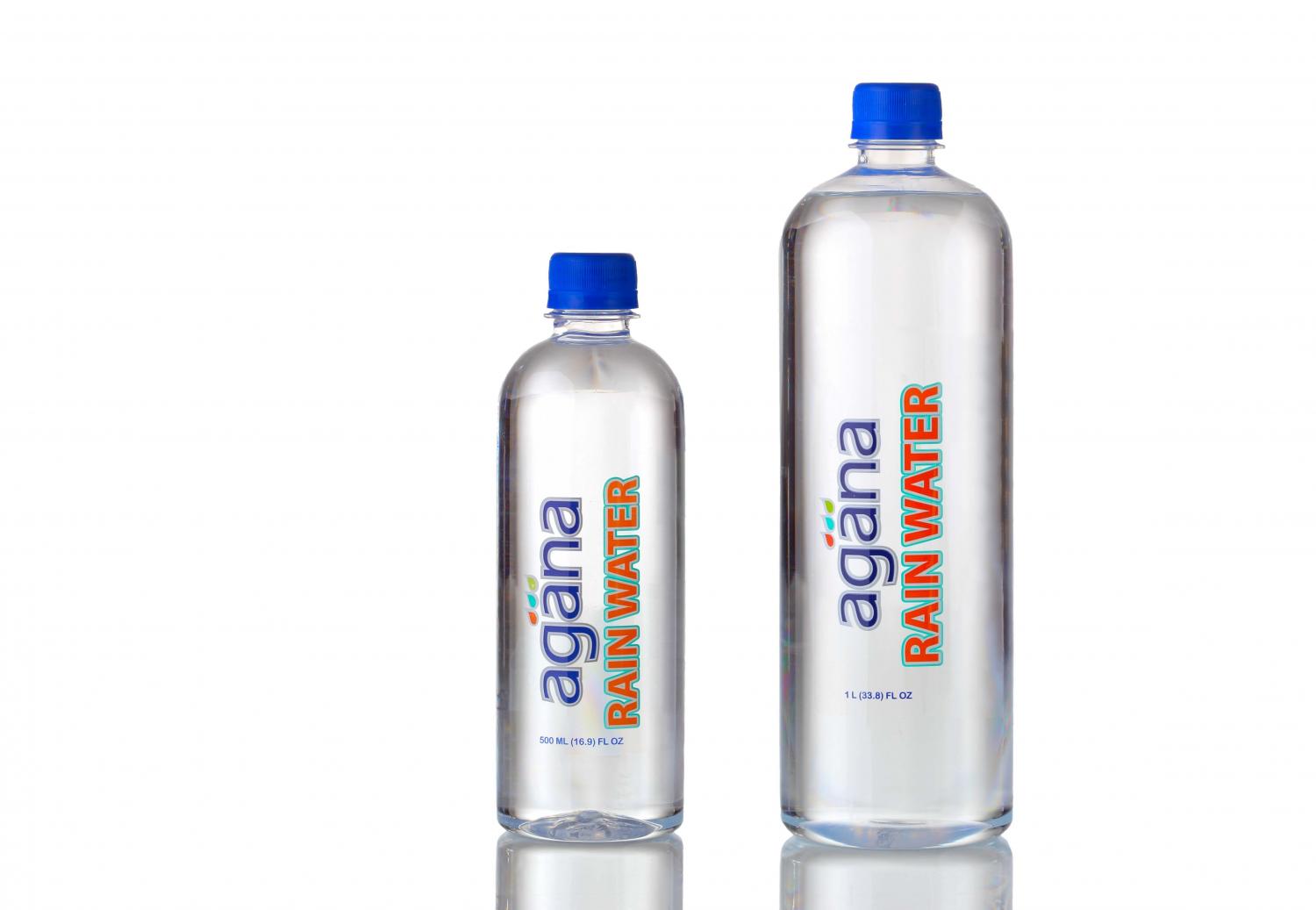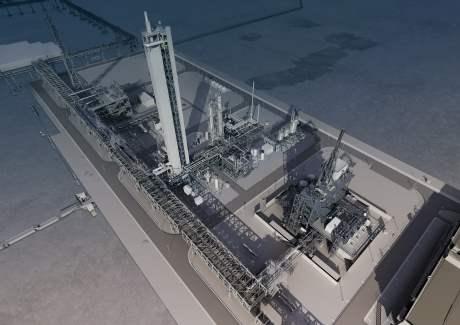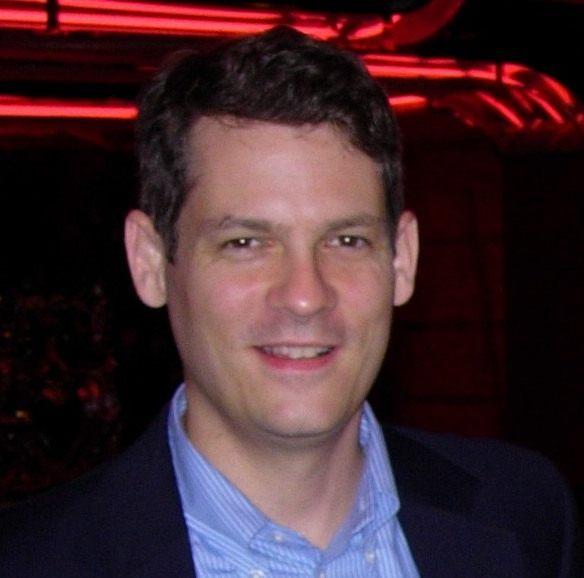More Cities Identifying Climate Risk and Building Resilience


By Jamie Carson
The corporate sector is playing a significant role in helping cities build resilience.
There is reasonable concern for cities to be considering this risk, which includes climate stressors such as wildfire, flood and sea level rise, said AECOM Director of Sustainable Development Claire Bonham-Carter on Feb. 25 during the panel “Identifying Climate Risk and Building Resilience” at the Climate Leadership Conference.
According to a recent CDP poll of 110 cities around the world, 98 percent of cities are reporting risk from climate change.
“These cities are reporting this risk now, not in the future,” Bonham-Carter emphasized.
The CDP report, "Wealthier, Healthier Cities," launched in London June 2013 and performed a deep dive into the cascading consequences of climate-related change and variability. The report’s data analysis and informational design were led by AECOM, and it was also co-sponsored by Autodesk and Jones Lang LaSalle.
It’s also important to note that 71 percent of cities are putting resilience plans in place to some extent, Bonham-Carter said.
Alan Cohn, director of climate and water quality for the New York City Department of Environmental Protection, said NYC has been planning for climate–as a stressor to its watershed and wastewater system–since 2004. In the region, $300 million in investments could protect $2.5 billion in wastewater assets from repeated flooding losses.
“There is no one-size-fits-all plan when you are talking about (climate) adaptation,” Cohn said. Considering critical thresholds for practical application is crucial – “What is the level of risk you are willing to accept?”
To do this, Cohn highlighted the benefit of collaborating with the academic and scientific communities.
“It is never going to be perfect; choose something, go with it, conduct assessment, and find shovel-ready projects to start preparing our cities,” Cohn said.
On the other side of the U.S., the state of California recently released its "Safeguarding California: Reducing Climate Risk" report that covers nine chapters–agriculture; biodiversity and habitat; emergency management; energy; forestry; oceans and coastal ecosystems and resources; public health; transportation; and water.
California aims to be sophisticated in communicating climate risk and works with a wide range of departments across the state, said Ann Chan, deputy secretary for climate change and energy, California Natural Resources Agency. Chan also recommended selectively choosing vocabulary that is intuitive and speaks to a broader audience.
“In government, we have always been frustrated by silos, and climate is a way to bridge the silos,” she said. “However, government can not do this alone; the magnitude of events that are occurring will require all sectors to come together to tackle the issue.”
Zurich-based Swiss Re and U.S.-based The Nature Conservancy, among other joint-industry leaders, have recently partnered on "The Case for Green Infrastructure," which assesses the costs and performance of how natural infrastructure–such as forests and wetlands–can increase business resilience.
“If we model the effectiveness of, for example, wetlands in protecting what lies behind them, we can put a value on the wetland,” said Mark Way, head sustainability, Americas, and director, group risk management, Swiss Re. “What we cannot yet do is to calculate the full value that that area has to the local community beyond it being a buffer to severe weather.”
Cities and businesses will increasingly rely on balancing green (natural) and gray (concrete) infrastructure to increase resilience as natural events continue to grow in frequency, said Michelle Lapinski, senior advisor, valuing nature, The Nature Conservancy. From the business perspective, Lapinski points to the recently launched Natural Capital Business Hub as a look at private-sector led initiatives to safeguard natural assets.
In a panel later in the afternoon of Feb. 25, “Communicating Climate, Targeting Your Audience,” panel moderator, Anne Kelly, Ceres director of public policy, echoed the sentiment of the earlier panel. She raised her hand and counted three important points in communicating about climate change in communities: “Simple message. Repeat often. Credible messenger.”
The Climate Leadership Conference (#TheCLC on social media) was held this year in San Diego, Feb. 24-26, and was co-sponsored by the Association of Climate Change Officers, the Center for Climate and Energy Solutions, The Climate Registry, and the U.S. Environmental Protection Agency. At the event, several companies were recognized with Climate Leadership Awards to help incentivize exemplary corporate, organizational, and individual leadership in response to climate change.
About the author: Jamie Carson is founder and director of C.C. Global – an environment, resilience & sustainability communications firm that works with local and global partners to advance cooperation, education and outreach in the sector. To that end, C.C. Global has created a track record of connecting dots to new opportunities, all while providing strategic communications services that support your organization’s mission and valuable team. Besides working as a communications support team, C.C. Global reinvests in social enterprise initiatives such as Envirorun, a run, networking and speaker opportunity for the community, and is in the process of launching more in 2014. C.C. Global was a Marketing Partner of the 2014 Climate Leadership Conference. Follow updates on Twitter @ccglobalUS and Facebook at C.C. Global.
Harvesting a Wasted Resource: Q&A with Rainwater Bottler Agana


Cities and companies may try to ban bottled water, but this convenient form of hydration isn’t going anywhere soon. One company, Agana Rainwater, is taking a different approach to making bottled water more environmentally friendly: collecting, filtering and bottling rainwater that would otherwise go wasted.
We interviewed Marc Howell, Agana’s founder and CEO, to learn more about the Buda,Texas-based company and hear about its future plans.
TriplePundit: How long has your company been in operation?
Marc Howell: We started sales in 2012, but started building the facility and getting state approvals in 2011.
3p: How did you come up with the idea to collect, bottle and sell rainwater?
MH: I am a licensed irrigator and start[ed] using rainwater collection for irrigation during drought times. Once I saw how plants responded to rain over municipal water, I knew that humans would respond the same way. We tested the water and found out that this is the purest form of raw water if collected [using our Sky Spring process].
3p: How does your product conserve water and other resources?
MH: There is no waste in our process like purified waters that throw away between 40 and 60 percent of the water. We are also using an unutilized resource that would otherwise sit in a planned retention pond and would never make it to lakes, rivers or aquifers. All other water sources pull off dwindling water supplies, while rainwater is taking what was already planned not to be utilized.
3p: How much rainwater have you collected and bottled since you’ve started your operation?
MH: We have bottled and sold nearly 1 million bottles since we started, and we have not begun to max-out our Buda Sky Spring facility. We can produce 1 million bottles on 1.5 inches of rain.
3p: Where do you collect the rainwater? Where would the rainwater go if you didn’t collect it (the storm drain, sidewalk, etc.)?
MH: We collect rainwater on our Sky Spring facility in Buda, Texas. The water would sit in our retention pond in the back of our building. None of it would make it to a water source or replenish the aquifer.
3p: Does collecting and bottling rainwater diminish ground water supplies?
MH: No, our concept is taking commercial real estate that already has a master planned drainage system and utilizing that resource.
3p: How do you process the water once it’s been collected?
MH: We flush and filter the raw water until it has bottled water clarity. Our finished raw water tank is 13 times purer than Fiji's finished product and two times as pure as Smartwater’s or Voss’. We then run our water through an ultra-filtration process and disinfect it with UV and ozone.
3p: Does acid rain affect your product?
MH: Acid rain is a reality in colder regions with acidic soil or around petrochemical plants. We have no acid rain around our Sky Spring facility in Buda and would avoid these areas for future Sky Spring facilities. Our requirement study can define those areas to avoid them.
3p: How are your bottles environmentally friendly? You say they’re both biodegradable and recyclable–how is that possible?
MH: We use Enso bottles, which are a petroleum-based polymer that is recyclable in mainstream recycling. The polymer is injected with an organic additive that, if introduced into an aerobic landfill situation, can biodegrade.
3p: Where do you sell your bottled water? Who are some of your biggest clients?
MH: We sell water to Whole Foods, Natural Grocers and Vitamin Cottage, the Four Seasons, the Hilton, the Hyatt, John F. Kennedy International Airport, LaGuardia International Airport, Ronald Reagan National Airport, Orlando International Airport and Philadelphia International Airport.
3p: Any exciting future plans for your company?
MH: We are looking to make Agana Rainwater a household regional name by bringing on an experienced sales/broker team that has 29 years experience in the consumer packaged goods industry. We are in talks with one of the world's largest retailers to [add our Sky Spring collection process] to their facilities and also in talks with the largest distributor in Costa Rica to do the same. We have weekly calls to partner with domestic and international companies looking to take control of their water futures.
Image credit: Agana Rainwater
Passionate about both writing and sustainability, Alexis Petru is freelance journalist based in the San Francisco Bay Area whose work has appeared on Earth911, Huffington Post and Patch.com. Prior to working as a writer, she coordinated environmental programs for Bay Area cities and counties. Connect with Alexis on Twitter at @alexispetru
Carbon Capture Technologies More Welcome in U.S., Norwegian Firm Says


Carbon capture and storage technologies designed to reduce emissions are getting a better reception in the U.S. than in Europe, according to Technology Centre Mongstad (TCM), a Norwegian firm that tests CCS technology.
A CNBC report based on interviews with TCM executives says the U.S is a “more welcoming place” for CCS technology, at least at the moment, because Europe is recovering from a debt crisis and recession.
TCM executives told CNBC that the U.S. shale boom is making carbon emissions reduction technology an easier sale. Also, as part of its energy strategy, the Obama administration last year paved the way for the increased use of CCS technology, which traps carbon from power plants and then injects it underground.
Further, "the fracking revolution in the U.S., if anything, has generated more interest" in carbon emissions capture, says Olav Falk-Pedersen, TCM's business development manager. A number of U.S. and Canadian companies are interested, he added.
"In general, CCS has suffered a setback in Europe," Falk-Pedersen said.
Howard Herzog, a senior research engineer at the MIT Energy Initiative, noted the U.S. is friendlier to CCS than Europe is because it's more acclimated to drilling activities.
The U.S. "is more used to oil and gas exploration, and (the CCS) technology is similar to that," Herzog continued. “In parts of Europe, they just don't like drilling.”
TCM says it is the world’s largest and most advanced facility for testing and improving CO2 capture. The center is a joint venture set up by the Norwegian state (75.12 percent), Statoil (20 percent), Shell (2.44 percent) and Sasol (2.44 percent). It aims to “increase knowledge on carbon capture technologies, in order to reduce technical and financial risk, and accelerate the development of qualified technologies capable of wide scale international deployment.”
The center operates two CO2 capture plants, each with a capacity to capture approximately 80,000 tons of CO2 from a nearby refinery or 20,000 tons from a gas-fired power plant. In addition, the center has available space and infrastructure to sustain the next-generation technologies to be tested in the future.
In a related development, TCM recently launched the world’s first large-scale tests of the amine solvent MEA on a gas-fired source; the results will be shared with the global CCS community in order “to increase knowledge and understanding and accelerate the implementation of CCS.”
Monoethanolamine (MEA) is used as a baseline solvent, which is commonly used in post-combustion carbon capture studies to compare the performance of proprietarily-developed amines and other CO2 removal processes, the center says. The firm, in cooperation with Aker Solutions, has been operating the amine plant since August 2012. TCM has begun large-scale testing of the performance of the MEA solvent system on gas-fired emissions sources, which will be shared openly, it said.
In addition to the somewhat better economic conditions in the U.S., there are still a large number of gas- and coal-fired plants in the U.S. that will probably hang around once CCS technologies are widely available. Something needs to be done with them besides junking them, right? Plant owners can also thank the shale “boom” and the White House energy strategy.
Image credit: TCM facility in Norway via the TCM site
Women in CSR: Meghna Tare, University of Texas at Arlington


Welcome to our series of interviews with leading female CSR practitioners where we are learning about what inspires these women and how they found their way to careers in sustainability. Read the rest of the series here.
TriplePundit: Briefly describe your role and responsibilities, and how many years you have been in the business.
Meghna Tare: I am the Director of Sustainability for University of Texas at Arlington. We have our own citizenry, nearly 35,000 students and more than 5,600 employees - as well as our own housing, businesses, transportation fleet and police force. Because the University’s main campus is in the heart of downtown Arlington, our growth is felt throughout the region. Since 2007, we have added 1.46 million square feet of building space to the campus.
I work collaboratively with faculty, staff, the student body and community members to address opportunities to promote sustainability in several areas including greening facility operations, promoting innovative research, supporting and encouraging student initiatives, implementing an environmentally and sustainability-focused curriculum, establishing community gardens and composting programs and sponsoring public service initiatives. I recommend policies and strategies to advance the university’s commitment to being leader in campus sustainability. I also work collaboratively and have established a working relationship with various stakeholders and agencies like EPA Region 6, North Central Texas Council of Governments (NCTCOG), North Texas Commission, local governments, DFW Airport, United States Business Council for Sustainable Development (USBCSD), Chamber of Commerce, Community College Districts and other nonprofits.
My journey in the field of sustainability started when I was in graduate school. At the expense of sounding clichéd, working in the area of sustainability truly is a journey with no fixed destination. The field is evolving every day and there is so much to learn. Every project that I have worked on has opened paths for new collaboration and learning experiences. I write blogs for TriplePundit, Cityminded.org, American Planning Association, and am also enrolled in an MBA program in Sustainable Management at the Presidio Graduate School. I teach sustainability policy and assessment to graduate students at University of Texas at Arlington. My job gives me the opportunity to conduct research on climate change, consult on sustainability planning and GRI reporting, and develop a business model to establish a Center for Sustainability and Environmental Studies at UT Arlington.
3p: How has the sustainability program evolved at your organization?
MT: Like most organizations, UT Arlington tackles issues of constrained resources, efficiency and productivity -doing more with less. We have been on a trajectory of growth and transformation through our pursuit to become a Tier One research university. As a result, we have celebrated many achievements, including record levels of enrollment. With this growth, however, comes increased challenges in managing our environmental footprint. We are working to embed the principles of sustainability across our curriculum and research as well as across campus in our facilities and operations.
Extending beyond our campus, we also are a part of the larger community of North Texas, which is rapidly growing and facing the challenges associated with such expansion including air quality, constrained water supplies, energy costs, financial pressures, and transportation options. Working with businesses, government, and communities, we are building lasting partnership. Universities are unique in that they have an opportunity to influence not only the community around them, but also the students, faculty, and staff within. Today, most campus sustainability initiatives comprise of cost savings from the use of long lasting CFL bulbs or double paned windows. But economic benefits are not the only force behind sustainability here at UTA. We tap into the “moral imperative,” based on the concept that everything is part of the puzzle. Students attending a university that places high value on sustainable operations are more likely to take this mindset to their future places of employment where they can help shape the future of environmentally-friendly companies.
3p: Tell us about someone (mentor, sponsor, friend, hero) who affected your sustainability journey, and how.
MT: I was fortunate to learn about climate change and sustainability from Professor Stephen Schneider at Stanford University. He was my academic advisor and mentor. He was a brilliant climate scientist and an engaging speaker with a great sense of humor. But most importantly he had the spirit and the audacity to be an “outlier” in everything that he did, including beating cancer. Dr. Schneider was part of the United Nations Intergovernmental Panel on Climate Change that shared the 2007 Nobel Peace Prize with former vice president Al Gore for international research on global warming. I owe my success and sustainability journey to his knowledge, guidance and faith in me.
I have a signed copy of his book “The Patient from Hell” in which he documented his struggle to conquer cancer, including applying his own knowledge of science to design his own treatment regime. I read it every now and then when I need inspiration and motivation.
3p: What is the best advice you have ever received?
MT: This quote from author H. Jackson Brown Jr. perfectly describes the principles by which I try to lead my life.
3p: Can you share a recent accomplishment you are especially proud of?Twenty years from now you will be more disappointed by the things that you didn't do than by the ones you did do. So throw off the bowlines. Sail away from the safe harbor. Catch the trade winds in your sails. Explore. Dream. Discover.”
MT: Within the United States, UT Arlington is one of the three universities to publish a GRI report. It was a challenging project! I have learned from experience that university campuses that tie together multiple areas of sustainability into a comprehensive, holistic plan or roadmap tend to be more successful — at getting buy-in from the community, funding various initiatives and achieving results and recognition. Hopefully, this report will open new doors for UTA in terms of funding and partnerships.
I am also a TEDx UTA speaker - something that I am very proud of.
But more importantly I am proud of keeping the work-life balance. I am a mother of twin boys (5 years old), working full time and enrolled in an MBA program at the same time. So life is a balancing act and I am proud of never dropping the ball.
This interview, doing a radio show with The Eyes of North Texas, presenting for the CATUN conference (Committee on Teaching for the Unites Nations) - I consider all these as my accomplishments. Following Einstein’s dictum that problems can’t be solved within the mindset that created them, these accomplishments and experiences help me understand the mental model that forms the basis of present thinking when it comes to sustainability, and makes me good at what I do.
3p: If you had the power to make one major change at your company or in your industry, what would it be?
MT: 1) Incorporate sustainability into the strategic plan for the University. Strategic planning is a means of establishing major directions for the University through which resources are concentrated in order to maximize benefits to stakeholders—those we exist to serve and who are affected by the choices we make. Strategic planning is a structured approach to anticipating the future and "exploiting the inevitable,” charting the broad course for the entire institution for five years. The plan should establish a foundation for integration of sustainability into the full range of its academic, operational and community activity. Planning for sustainability should not be an afterthought or an add-on.
2) Establish a Green Revolving fund (GRF) for UT Arlington. A GRF is an internal fund that provides financing to parties within an organization to implement energy efficiency, renewable energy and other sustainability projects that generate cost-savings. These savings are tracked and used to replenish the fund for the next round of green investments, thus establishing a sustainable funding cycle while cutting operating costs and reducing environmental impact.
3p: Describe your perfect day.
MT: My perfect day would include hiking or biking, lunch with my husband, spending time with my kids in the park watching them run, reading a good book and cooking for my family. I love to travel and explore new places and culture and want to share those experiences with my kids as they grow up. I do love my job so every day is perfect for me! But the monotony of routine drives me insane, so I am always looking for something new and adventurous in life.
Dating Profile Pics Showing Your Humanitarian Work: Hot or Not?


Profile pictures on social media platforms and dating apps are oh-so-easy to poke fun at: There’s the quirky girl with a cutesy fake moustache or the ex-frat boy chugging a pint of beer at his favorite bar.
But Brooklyn-based filmmaker Cody Clarke discovered a more unsettling trend in profile photos while flipping through the dating app Tinder that pulls pictures and information from users’ Facebook profiles: light-skinned women from developed countries posing with babies and children in developing countries.
“Obviously the original intent, is, ‘Hey, friends, look where I was,’” Clarke told Fast Company. “[But] if you see a lot of them in a row, it becomes a trend and becomes a disgusting thing. It’s like they’re standing around props.”
Clarke started a blog, Humanitarians of Tinder, to post the original photos he found last month and has been uploading new pictures ever since, adding similar photos of men showing off their international philanthropic efforts and inviting readers to submit pictures they come across.
Clarke doesn’t provide any written commentary with the photos (he told Fast Company that he’s just archiving a phenomenon he sees), but the message behind the blog is clear: Boasting about your altruism–and taking photos with locals as you would with exotic wildlife or tourist attractions–to get a date is not attractive. The blog also raises questions about the ethics of modern “voluntourism,” namely how it fits in with larger issues of race, privilege and imperialism and reflects a long history of the developed world’s misguided charity in developing countries.
But should we really single out these well-meaning, albeit naïve individuals, for public shaming on the Internet, especially as the Humanitarians of Tinder blog goes viral and their photos are posted across more and more sites?
“[Internet] shaming all too frequently divorces online behavior from its context—for all we know, Lauren [one of the blog’s Humanitarians pictured with a young boy] is playing with her nephew or something. Even more concerning, shaming often invites repercussions that are totally out of proportion with the perceived crime—i.e., "Lauren may seem tone deaf, but does she really deserve to have her face plastered on a zillion sites?” as journalist Caitlin Dewey wrote on the Washington Post.
While Internet shaming is a consequence of Clarke’s social media sensation, it seems like it is not the blog’s intent. Clarke is helping his featured humanitarians protect their identities by blurring their faces when he receives a request from someone who discovered his or her photo was posted on the blog. Obscuring the faces of these misguided philanthropists actually heightens the effect of scrolling down the Humanitarians of Tinder blog, seeing photo after photo, and recognizing the trend that these photos reflect--rather than getting distracted by the specific individuals taking part in what they see as good deeds.
Because--just as Gloria Steinem pointed out that we shouldn’t fault Miley Cyrus for her infamous Video Music Awards performance but we should criticize the culture that rewards her behavior with fame and fortune--we shouldn’t blame the naïve individuals on Clarke’s blog for wanting to do something good. We should, instead, turn a critical eye towards our society that perpetuates stereotypes about the developing world’s "need to be saved” and our role as saviors, as well as update our models of altruism to better reflect the realities of developing countries and their actual needs.
Image credit: Humanitarians of Tinder
Passionate about both writing and sustainability, Alexis Petru is freelance journalist based in the San Francisco Bay Area whose work has appeared on Earth911, Huffington Post and Patch.com. Prior to working as a writer, she coordinated environmental programs for Bay Area cities and counties. Connect with Alexis on Twitter at @alexispetru
Global project to build investment metrics for greener construction


A major global project which will help to define the health and productivity benefits of green office buildings has been launched by the World Green Building Council (WorldGBC).
While studies have shown that there can be 11% gains in productivity from improved ventilation and up to 23% gains in productivity from improved lights, challenges remain in measuring such outcomes and attaching financial value to them.
Jane Henley, ceo of WorldGBC, said: “While there is a growing body of research that firmly supports the connections between sustainable buildings and improved health, productivity and learning outcomes of those who occupy them, this evidence is yet to inform investment decisions in the same way as traditional financial metrics. This project aims to identify the metrics that will support investment in greener buildings.”
Sponsored by Jones Lang LaSalle, Lend Lease and Skanska, the Green Building Councils of Hong Kong, United Kingdom, United States and Colombia are also partnering on the project.
Staffan Haglind, Green Business Officer at Skanska, commented: “The situation today – where buildings’ impact on human health, wellbeing and performance is usually not taken into consideration – is not good enough. I’m totally convinced that optimizing premises from a human perspective will help people as well as organizations to thrive and outperform. To support the development of the tools and metrics needed to make this happen is perfectly aligned with Skanska’s company values.”
The project builds upon WorldGBC’s report The Business Case for Green Building which summarized the existing research into the health benefits of sustainable buildings. Published in March last year, the report acknowledged that more work was needed to build the evidence base and translate academic research into information that could be used to inform business decisions. A final report is expected this autumn.
Picture credit: © Soleilc | Dreamstime.com
Live Chat with Phil Bresee: Recycling Director, City of Philadelphia


Every Wednesday at 4pm PST / 7pm EST (and every once in a while at other times) TriplePundit will take 30 minutes or so to chat with an interesting leader in the sustainable business movement. These chats are broadcast on our Google+ channel and embedded via YouTube right here on 3p.
On March 5th, TriplePundit's Founder Nick Aster spoke with Phil Bresee about solid waste management in the United States and in Philadelphia, the benefits of recycling, and where this industry is headed. Phil informed the audience about natural resource savings, the implicit reduction in GHG emissions, energy saved, and economic benefits for the City.
If you missed the conversation, you can watch it right here or on our YouTube channel.
About Phil:
Since July 2012 Phil Bresee has been the recycling director for the City of Philadelphia, the fifth most populous city in the U.S., overseeing programs and policy planning for one of the largest solid waste and recycling operations in the nation. Bresee’s focus includes the city’s recyclables processing contract, the Recycling Rewards incentive program, commercial and institutional recycling, public outreach, and serving as the lead staffer for the city’s solid waste and recycling advisory committee. Recycling and waste reduction are key strategies in Philadelphia’s Greenworks plan, which is Mayor Michael Nutter’s blueprint for making Philadelphia the nation’s greenest city by 2015.
From 2004 until 2012, Bresee was the recycling program manager for Broward County, Florida, the second-largest county in the southeast and eighteenth largest in the U.S. Bresee led a staff of up to 19, directing programs and initiatives on behalf of the county, its 26 partner cities and the Broward public schools system. Bresee also was the architect of a $20 million recycling grants project which used solid waste system reserves to help cities improve their residential recycling programs. Bresee also managed the county’s innovative project that studied the feasibility of using pulverized recycled glass for beach erosion control.
Phil has served in elected leadership positions in statewide recycling associations, including as chair of Recycle Florida Today, and as president of the Maryland Recyclers Coalition.
The Better Cotton Initiative: Making Sustainable Cotton Mainstream?


"King Cotton," as it came to be known in the American South, has an unsettled past.
The crop has played a critical role throughout history. As with all things intertwined with human endeavor, cotton bears witness to our triumph and tragedy, often playing a central role in each.
Enduring the threefold challenge of economic, social and environmental issues, cotton production is often implicated as unsustainable and subject to the allure and consequence of profit at all cost. Global cotton production comes increasingly from low-wage areas of the developing world like China, India, Africa, Bangladesh and Latin America.
Cotton accounts for 40 percent of global textile production, supporting the livelihoods of 300 million people or nearly 7 percent of all labor in the developing world. The scale of global cotton reflects how much we depend on it and how far removed most of us are from the effects of its production and consumption. The cotton industry reaches all the way from small-holder farmers living in poverty to the chic fashion salons of New York and Europe.
According to the Sustainable Trade Initiative (IDH) the cotton industry accounts for about 10 percent of all agricultural chemicals used worldwide. According to the World Wildlife Fund, it takes about 20,000 liters (more than 5,200 gallons) of water to produce one kilogram of cotton, roughly the cotton required to produce one T-shirt and a pair of jeans.
Cotton represents 2.6 percent of the water footprint for all goods and services consumed globally. Irrigation supports 70 percent of global cotton production and, according to estimates by the Environmental Justice Foundation, 15 to 35 percent of those water withdrawals are considered unsustainable.
Demand for organic and fair trade cotton mounts in the face of this environmental impact, as well as the low incomes of tens of millions of cotton farmers in the developing world. But the challenge of meeting the global scale of cotton production demands a mainstream approach for which any niche market is ill-suited.
This is not to say that fair trade and organic certification programs do not play an important role, but making King Cotton sustainable, in a triple-bottom-line sort of way, requires a process that matches the scale of global impact from cotton production, using partnerships and core principles to make best practices mainstream.
Better cotton
The first stirrings of the what is now the Better Cotton Initiative (BCI) began in 2005 when a group of commodity experts convened in a WWF-hosted roundtable discussion to consider solutions for global agriculture.
Any effective mechanism to impact change in cotton production requires a set of guiding principles. It took several years of preparation, but in 2009 the Better Cotton Initiative formally organized--publishing, in partnership with retailers, manufacturers, advisory groups and NGOs, its first set of global standards known as the Production Principals and Criteria, the foundation of the Better Cotton System.
The six core elements of the Production Principles and Criteria standard stress a holistic approach to Better Cotton:
- Better Cotton is produced by farmers who minimize the harmful impact of crop protection practices.
- Better Cotton is produced by farmers who use water efficiently and care for the availability of water.
- Better Cotton is produced by farmers who care for the health of the soil.
- Better Cotton is produced by farmers who conserve natural habitats.
- Better Cotton is produced by farmers who care for and preserve the quality of the fibre.
- Better Cotton is produced by farmers who promote Decent Work.
The Better Cotton Standard is a demand-driven mechanism aimed principally for capacity-building at the initial production stage. In-the-field training, support and measurement of production methods help farmers reduce environmental impact while increasing efficiency and productivity. Instead of being paid a premium for output of certified fair trade or organic cotton, small-holder farms, and indeed farms of all sizes, learn to better manage their cotton production and in the process increase their income.
Maintaining “standards compliance” is more effective when farmers improve their lives and incomes through better management. With no premium for certification, demand for sustainable cotton shifts to mainstream supply chains instead of relying solely on smaller niche markets for distribution.
Partnership is the nexus of positive change, turning theoretical principles into real impact. The key to Better Cotton is its collaboration with Implementing Partner organizations that are working directly with farmers to improve water efficiency, reduce cost and use of chemicals, and improve crop yield.
Levi Strauss & Co., is both an Implementing Partner and Pioneer Member with BCI--and not surprisingly, if not only for the iconic brand’s dependence on cotton but also for the company’s adoption of sustainability as a core component of its mission.
“Becoming a Pioneer Member of BCI this year reflects our company’s commitment since 2009 to transform how cotton is cultivated for our business, our consumers, and the millions of people in some of the world’s poorest countries who depend on it for their livelihood,” says Manuel Baigorri, director of global sustainability operations for Levi Strauss & Co.
“We have served on the BCI Board for a number of years and are a member of the Better Cotton Fast Track Program,” (BCFT).
Better Cotton Fast Track
Launched in 2010, the Better Cotton Fast Track is an independent coalition of private and public partners managed by the Sustainable Trade Initiative. BCFT partners channel funds directly into farmer training and capacity building around the Better Cotton Standard. As the name implies, Better Cotton Fast Track helps escalate Better Cotton as a mainstream sustainable commodity in the marketplace.
“This allows BCI and its partners to reach more regions, train more farmers and produce more Better Cotton, dramatically accelerating the scale-up of Better Cotton worldwide,” says Baigorri.
The latest available harvest report shows that in 2012 more than $9.6 million was invested in 31 projects throughout Mali, Brazil, Pakistan, India and China--producing 623,000 metric tons of Better Cotton lint (“seed” cotton is before ginning, “lint” cotton is after ginning). "This is increasing as we speak," Baigorri adds.
BCI monitors water and pesticide use at the local, field and farm level. Overall success is gauged by total number of hectares under cultivation within the Better Cotton Standard. Results so far from the first three BCI harvests show consistently positive trends in both increased water efficiency and reduced pesticide use. Case studies in India show a 30 percent reduction in pesticide use and a 17 percent reduction in water use, with a 14 percent increase in profitability over control farmers in the study.
Numbers help quantify improvement, but stories from the field bring the full impact of BCI into focus. Muhammad Ramzan farms five "sandy acres" of Better Cotton in Yazman, Pakistan. It is a challenging area for a cotton farmer where finding enough water is difficult and expensive. For Ramzan, the benefits of adopting the Better Cotton Standard are profound:
“I acted upon their advice even though this was a new technique for me. This was a turning point in my cotton growing history. The irrigation efficiency of my farm doubled, and I saved money and time. And the most important thing--my children went back to school.”
Water, cotton and a pair of jeans
In 2007 Levi’s conducted a lifecycle assessment for their two of their most iconic products: a pair of Levi’s® 501 jeans and Dockers® Original Khakis. Focusing on water, climate and energy impacts, what they found surprised them.
"Our study demonstrated that the greatest opportunities for reducing the environmental impacts of our products are at the beginning--that is, at the cotton agriculture stage--and at the consumer use stage (repeated washing and drying),” says Baigorri. The Care Tag for Our Planet Initiative, launched in partnership with Goodwill Industries, works to reduce impact at the consumer end. The Better Cotton Standard offers an effective response at the agricultural stage.
“The Better Cotton Initiative brings many stakeholders together to create scalable solutions designed to reduce water use in cotton cultivation. The Better Cotton Standard addresses water use in cotton cultivation and is one of our responses to the impacts created by our use of cotton in our products."
Chain of custody: Driving demand for Better Cotton
Building capacity and best practices at the production level are primary goals for Better Cotton, but without awareness and demand there is little lasting impact. The market is complex and diverse.
In the manner that BCI’s Production Principles and Criteria guide cotton at its source of production, the Better Cotton Chain of Custody Guidelines (CoC) “provide guidance on Better Cotton CoC requirements for all supply chain actors.”
The CoC uses a “Mass-Balance” (MBa) mechanism to monitor and verify flow of Better Cotton across the supply chain, from Implementing and Strategic partners at the farm-to-ginner level to retailers and brands making claims about Better Cotton procurement.
“This approach of the BCI is key to cotton transformation,” says Baigorri. “BCI is a multi-stakeholder organization that has focused on key components of the cotton supply chain–generating the supply of Better Cotton and also stimulating the demand for Better Cotton via its brand and retailer members.”
Increased demand is the obvious path toward mainstream acceptance. Major brands and retailers are key in communicating the benefit of Better Cotton to consumers and creating demand to procure from their suppliers cotton produced under the Better Cotton Standard.
“Brands and retailers work on creating supply chain links across the many intermediaries to procure the Better Cotton which has been produced using a system of claims units that can be exchanged between members,” says Baigorri. "At this moment, the ability to make claims about Better Cotton procurement directly to consumers is possible in-store and at a corporate level, although not on product labels. As the project scales up, there is a focus to continuously develop the way brands and retailers communicate directly to consumers about Better Cotton.”
Going mainstream
By 2020, one-third of global cotton production will be Better Cotton. This is the ambitious goal of the BCI and given the “fast track” growth of the Better Cotton harvest in its first years of implementation--along with strong support from major brands like Levi’s, IKEA, Adidas and others--it is posed to achieve it.
But the list is long of great ideas limited by their inability to sufficiently scale and achieve real impact. The Better Cotton Initiative is not immune to these challenges especially those of funding expansion and matching demand with supply.
BCI measures the Gin Uptake Level (GUR), or the percentage of Better Cotton produced that is procured by ginners, at a relatively consistent 40 percent. The Retailer Uptake Level (RUR), or the amount of Better Cotton available at gins procured by retailers, fell from 35 percent in 2011 to 21 percent in 2012 A 2013 report written by strategy consultants Steward Redqueen, on behalf of the Sustainable Trade Initiative, warns that market demand for Better Cotton is not yet self-sustaining.
In response to these indicators BCI and IDH are planning a new business model based on charging retailers and brands a Volume Based Fee on their Better Cotton procurement. Fees collected support Better Cotton production and delivery. Continued work on a Better Cotton Demand Strategy seeks to further increase corporate participation and consumer awareness.
Better Cotton is king
And so the story of cotton continues to evolve. Could it be that as goes cotton, goes civilization? The implications of that question are best left to smarter people than I, but it is clear that the the Better Cotton Initiative serves as a framework for change.
Certainly the BCI is a work in progress, but it is work that, as Baigorri says, "is vital to the future of cotton."
Solutions rarely emerge fully formed. Given the scale of the challenge and the initial success of BCI, King Cotton may very soon be replaced with Better Cotton.
Cotton field image: Flickr/mocheeks
Better Cotton Initiative logo courtesy of BCI
All About Logistics: 5 Things to Think About After Forming a New Organization


By Erin McClarty
I'm in the throes of preparation for the Social Enterprise Alliance (SEA) National Summit in April, and while brainstorming I got to thinking about just how universal all organizations are.
We spend alot of time differentiating between exempt organizations, social enterprises, hybrids, traditional for-profits and the like. When in reality, the number of similarities is staggering. Similarities in challenges. similarities in concerns. Similarities in exposure. And to me, the biggest similarity is that feeling of "What am I not thinking about?" that all founders inevitably encounter after start-up.
Not too long ago I wrote a post about the top five things nonprofits should think about before forming. But I want to take it a step further and highlight a few things that all founders should be thinking about shortly after creating an entity. Be it a church, association, social enterprise, hybrid or for-profit corporation.
1. Taxes
The moment an organization forms it becomes subject to taxes. Aside from federal income or employment taxes, there are also state and local taxes such as property taxes, use taxes, franchise taxes, etc. Your best friend will be the IRS site (trust me, it's actually a pretty good site) and the sites for your state and local tax authority (ties).
Use the IRS site to guide the setup logistics in a way that maximizes deductions. If there are local tax exemptions you fall under, find and apply for these as soon as possible. Otherwise, you'll end up paying for taxes that could have been avoided. Oftentimes, there are also local initiatives (community rebuilding, organic gardening, etc.) where you may be able to get tax breaks. I also find it beneficial to create a tax calendar detailing when certain taxes are due. Especially since I doubt the first thing you'll wake up thinking is, "Hmmm, what taxes am I responsible for today?"
2. Permitting
So impactful, but always an afterthought. You may be surprised how many permits the things you want to do might require. Occupying certain buildings, working out of certain areas, making certain services mobile, cooking in or for the public, selling, handling and disposing of certain items...these all could require different licenses, permits or filings. Many cities (Houston is one) have an office that educates businesses on what types of licenses or permits to think about and how to go get them. After all, I would hate for you to invest in snazzy promotions and send something to all your Facebook friends only to be shut down.
3. BYOD
You have Skype, Google Chat, Dropbox , Twitter, Androids, iPhones, yada, yada--all of which make it easier for teams to work together. But the problem becomes policing. What happens if an important document is needed, but it's on your ex-partner’s personal computer...the partner that you made mad six months ago and no longer talks to you? How many times have we read about employees losing computers that end up getting hacked?
It's important to set ground rules from the start. First, decide whether there is a preference for the devices used. If work devices are issued, make it clear to everyone that there is no expectation of privacy. Have a document retention or destruction policy drafted that outlines things like where documents must be saved, how and with what titles. If applications or accounts are opened, require passwords be centrally kept. Lastly, rotate out the responsibility for social media accounts to avoid losing an awesome Twitter feed due to questionable ownership.
4. Volunteers and interns
There are a few laws in place to protect organizations from volunteer liability where they are formally created (for example a corporation) and exempt in nature. The picture becomes a bit hazier when you start talking about social enterprises. And since insurance policies have started to resemble ancient manuscripts taking a "let insurance handle it" attitude, it could be dangerous.
The best line of defense will be identifying and managing the risks. If you operate in incredibly dangerous areas, or do incredibly dangerous work, why not leave some of that up to employees? Mrs. Weatherston wanting to deliver rations to a military zone in a developing country is noble. But she can be just as helpful assisting staff administratively.
Put policies in place detailing how volunteers are recruited, trained, used, disciplined and removed. Nowadays, organizations like VolunteerHouston will also help run background checks on volunteers. If volunteers or interns will be around money, rotate them out and train them. And if you've somehow missed the THOUSANDS of articles about the dangers of using interns, read up on JDSupra and the IRS website. There are ways to appropriately set up and manage the arrangement that help you avoid getting sued.
5. General ops
Think about the risks in what you do as bread-and-butter. If delivering some type of energy or medical supplies, your supply chain is key. If a vendor screws up a delivery, your customers aren't coming after them. They're coming after you. Do you have the appropriate diligence in place for new vendors? What do your contracts say? I assume you, in fact, have contracts in place. If you don't, then just imagine me glaring at you right now.
How are your logistics set up? Are they done in a way that puts you at risk for losses or damage that isn't your fault? Do you have protocols in place that avoid you procuring items from sanctioned countries or people? Organizations don't realize how incredibly easy it is to slip up.
These of course are just the tip of the iceberg. Lucky for you, identifying and managing these things is what my presentation will be on at the Social Enterprise Alliance Summit in April. So now you have that much more incentive to go. But in the end, I always tell people the point is to identify as many exposures as possible and come up with resourceful ways to monitor. The key is awareness.
Erin McClarty is Legal Counsel for a Fortune 300 company by day and a nonprofit advocate by night. You can read more about trending legal issues, her work and upcoming speaking events on her blog www.notationsonnonprofits.com, or hear her speak in person at the upcoming Social Enterprise Alliance Summit ‘14.
Wellness Isn’t Just for the Health Industry


By Paresh Shah
What is wellness? Many people think that if you’re not suffering from a disease, then you’re well. However, there are many unseen factors to wellness that are critical to your employees’ creativity and productivity. If you envision a thriving company with healthy, happy employees, then it’s time to update your definition of wellness.
Expanding our definition of wellness
The traditional definition of wellness is typically based on a person’s physical state or a diagnosed mental or physical condition or malady. In a clinical sense, a lack of negative physical symptoms equals health.
Over the past two decades, we’ve learned that there is a direct link between mind, body and spirit that contributes to a broader scope of health. We now understand that wellness includes a person’s happiness and fulfillment. Whether your organization focuses explicitly on the triple bottom line or simple profitability, this type of wellness can be taken straight to the bank.
Wellness in the workplace
Dr. Halbert Dunn, known to many as the "father of the wellness movement," defines wellness as a method of functioning in which people progress toward their maximum potential. This understanding solidifies a connection between a high level of wellness within a company and higher levels of productivity and innovation from its employees.People who are mentally and emotionally healthy also tend to be in better physical health. Healthier employees take fewer sick days, are more engaged in work and create a positive dynamic with co-workers. Combining the positive effects of good health and high employee retention with a superior culture gives your company a major competitive edge. Quality people want to work in a quality environment. By embracing this idea, you can form a stronger workforce that will surpass other organizations in your field.
Success through wellness
Companies across all industries are making wellness a priority. They’re designing products and services that promote well-being for consumers and adding benefits for employees to maintain a balanced life and nourish all aspects of well-being.
Here are some examples of companies outside the health industry that are truly embracing wellness:
- In entertainment: Contrary to its reputation for raising a generation of couch potatoes, many companies in entertainment have committed to promoting wellness among their viewers. Disney, for example, requires every TV series to have an episode each season devoted to a “positive, healthy lifestyle message.” Several TV personalities, like Oprah Winfrey and Ellen DeGeneres, are attempting to improve people’s quality of life directly. Self-help has become a multibillion-dollar industry, and physical and emotional health drive topics for successful shows. Dr. Oz and The Biggest Loser are part of a self-help TV niche that teaches people the necessary skills to be physically and mentally healthy
- In technology: Tech companies are known for their demanding work cultures, but many companies are adding health-promoting perks for their employees. ReadyTalk offers employees 20 hours of paid volunteer time per year so they can give back to the community. LinkedIn holds regular meditation hours. Some companies, like HubSpot and Evernote, even offer limitless vacation time with the understanding that people are more productive in a flexible working environment.
- In marketing: Many advertising agencies offer an abundance of extras to keep employees fit, happy and centered. AKQA, Grey, Huge, and Wieden+Kennedy all offer yoga classes. Crispin Porter + Bogusky has an ex-Buddhist monk on its payroll to offer mindfulness sessions throughout the week, and 72andSunny employs a life coach.
Incorporating wellness in your company
Not all companies have the budget to implement an elaborate wellness program, but you can find a variety of ways to make employee wellness a priority. Here are some ideas that work, regardless of what industry you’re in:
- Improve your employees’ commute. Going to and from work sets the tone for your day. Try to locate your company where your employees can live nearby, or offer a shuttle service, a carpool program, or incentives for biking to work to reduce the stress of driving. A Harris Interactive poll commissioned by The Workforce Institute showed that 48 percent of people felt their commutes significantly impacted their job satisfaction.
- Bring in plants. One of the hardest things about working in an office is the stale air and lack of nature. Research shows that plants help people feel better—a simple but effective step toward improved well-being.
- Hold walking meetings. Walking is one of the best ways to create balance in the brain, and many meetings can be done on foot rather than in a stuffy conference room. If your office is located outside an urban area, you can even boost your team’s memory by 20 percent.
- Encourage employees to bring children to work. Kids are a huge part of many people’s lives outside the office. Their presence at work can build continuity between work and home and help people see their co-workers as real people.
- Teach and practice true listening. Non-judgmental listening and being fully present with another person helps increase empathy and bonding. When people feel they are truly heard, it creates a tremendous connection with the other person and can serve as a type of therapy.
- Encourage individual passions. Allow people the time and space to pursue what they love while they’re at work. When you activate people’s ability to express their personal interests, it can lead to innovation and ideas for the company as well.
We all desire true wellness—not just to live, but to thrive. When you value your workers as people, they sense that and work to return that respect to your business through increased dedication and contributions. Achieving a sense of well-being builds community and increases overall productivity. Open your eyes to your employees’ needs, and find a way to improve the physical and emotional health of your staff. Your sense of self, creativity, and energy will flourish—as will the triple bottom line.
Paresh Shah is an experienced entrepreneur, executive, and innovation consultant. He is currently the founder and CEO of Glimpulse, creating products, services, and platforms for well-being via self-expression. Prior to Glimpulse, he co-founded a wireless multimedia company and raised $130 MM. He has served as an adjunct professor in strategy and entrepreneurship and earned an MBA at Harvard University.